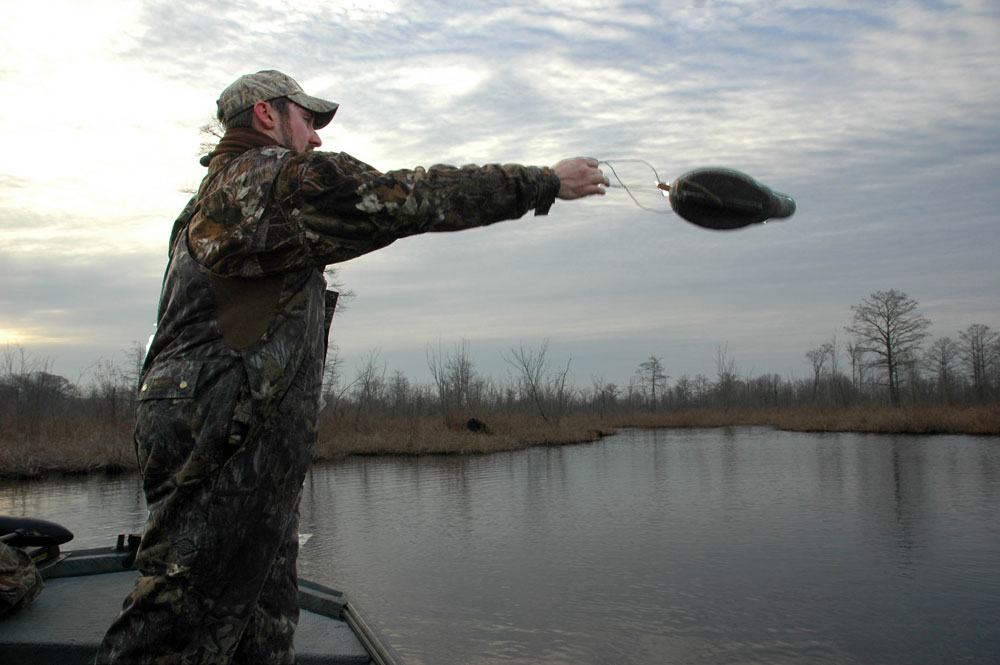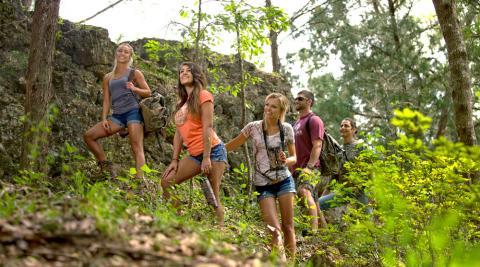provided by John E. Phillips
Mossy Oak Waterfowl Pro Barnie Calef from Cedar Rapids, Iowa, is a leading authority on waterfowl hunting and has won three World Duck Calling Championships. Calef travels the nation teaching waterfowling seminars for many of the nation’s leading outdoor companies. “I can’t remember when I didn’t wear Mossy Oak camouflage,” Calef says. “I believe in it, and that’s why I wear it.” Calef masterfully calls ducks with his Calef Calls Inc. brand. The migration has about ended, and we wanted to know how Calef finds, calls, decoys and takes ducks in his home state of Iowa.

Most of the earliest places I hunt are what’s known as traffic areas. These locations are between where the ducks roost or feed, and where they loaf during the day. I’m trying to attract ducks that really don’t want to be where I’ve set up to call them. However, when someone is having a party, and you’re passing by, you’ll at least stick your head in the door and see what kind of party is happening. You want to know if the folks are having fun or eating food, and then you’ll probably crash the party. That’s how we’re trying to attract trafficking ducks into our decoys. These ducks are flying over between their feeding and their loafing spots and don’t really have a reason to come to your calling or your decoy spread. The bigger the spread in the late season, the more ducks I believe I can attract.
So, I’ll put out 300 decoys. I like DOA decoys because I believe them to be the best. Decoys are like shotgun shells. Different hunters believe that certain decoys are better than others. DOA doesn’t sponsor me; I actually buy these decoys. I use mallard decoys and Canada goose decoys in my spread. In the late season, I’ll put out 60 Canada goose floating decoys and 80 mallard floating decoys. On sunny days, I’ll have a minimum of two spinning-wing decoys in my spread. On cloudy days, I won’t use any spinning-wing decoys. I know that on sunny days those spinning-wing decoys can pull in high-flying ducks from a long distance from my blind. But I’ve also learned that on cloudy days, they have little or no effect on those high-flying flocks.
The reason I use the Canada goose floating decoys is because most of the places I hunt I can take a limit of Canada geese and a limit of ducks on the same day. My favorite day to hunt ducks is a bright, sunny day with a southeast wind, and I’ll usually be able to shoot a limit of Canada geese and ducks on the same day. Most of the time I’m hunting big-water ducks then.
I don’t scout for ducks. I know that ducks will feed in a corn field and then come out to the big water to rest after they finish feeding. I usually hunt the headwaters of a river that flows into a very big lake. The ducks we usually hunt traffic up and down the river to get to the lake. The real secret to taking the ducks is to be under the ducks as they fly down the river toward the lake. Most rivers I hunt may be a 1/4-mile wide. So, if the ducks are flying by my boat, I just move. For instance, the last time I was hunting, we put out two-dozen decoys and set up on the river. The first two flights of ducks we saw didn’t fly over our blind. So, we just picked up our ducks, moved up the river and put our boat under the path the ducks were flying. We limited-out fairly quickly. Several other hunters were on the river, and we watched how they were set up on the ducks. Then when we moved, we got above the other hunters, so that the ducks would come up over our blind first. We had to move about 600 yards to ensure that the ducks would fly over us.






























